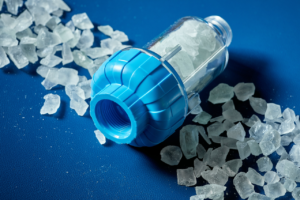Reverse Osmosis and water softeners are two different water conditioning mechanisms. Despite their differences, they are equally important for safe water application and consumption. When activated together, they both compliment each other to create water of the highest quality.
Water Softeners
Water softeners have been in the market for a very long time. They take minerals out of the water and replace them with softer minerals such as sodium or potassium. This occurrence of replacement is also called an ion exchange process.
The resulting particles after the ion exchange are considered softer because they do not build up as much in your system and do not damage metallic pipes. Harder particles such as calcium are reactive to other particles. This is why they tend to build up and accumulate inside the tubes.
This accumulation leads to changes in water pressure, and can often cause permanent damages and leaks that can be very costly to repair. Therefore, softeners help you save that cost by softening up the waters. Thus, they are important for any facility that uses water. This involves households and industries.
Another advantage of water softeners is that they help you get rid of the stains from utensils. A common downside of using water softeners is that you must waste plenty of water. This is because a softener system requires a large water sample during the regeneration process.
However, different brands of water softeners use different amounts of water for regeneration. Since softeners add sodium to the water, you may need a reverse osmosis system to extract all the sodium and fluoride particles so that the water is drinkable.
The amount of sodium added to the water during the softening process depends on the hardness of your water. For instance, if your wa ter is very hard, you may need to add about 20 to 30 milligrams of sodium for every eight ounces of water.
ter is very hard, you may need to add about 20 to 30 milligrams of sodium for every eight ounces of water.
Reverse Osmosis Process as opposed to Water softeners
Water softeners use the ionization of active particles and leverage from their reactivity to turn them into salts for purification. This is unlike the reverse osmosis process, which uses the principles of osmosis and diffusion, and leverage from creating a concentration gradient in the water. This allows the contaminant and harmful particles to move filter out easily.
Osmosis is a natural process in which water passes through a membrane spontaneously. The membrane or semi-permeable barrier allows the water molecules to pass through. However, this semi-porous membrane does not let most salts and other large particles pass. This is because they cannot fit the pores of the membrane layers.
The liquid flow through such a membrane will naturally try to even out the salt concentrations between the two solutions. It is also worth keeping in mind that when this liquid flow direction reverses, you can call it reverse osmosis. You can force water molecules in the opposite direction by pressurizing the concentrated solution.
Conclusion
As you can see, comparing reverse osmosis devices with water softeners is not justified, as both serve a completely different purpose. Reverse osmosis filters and separates salts and other particles, while water softeners ionize them to salts.





